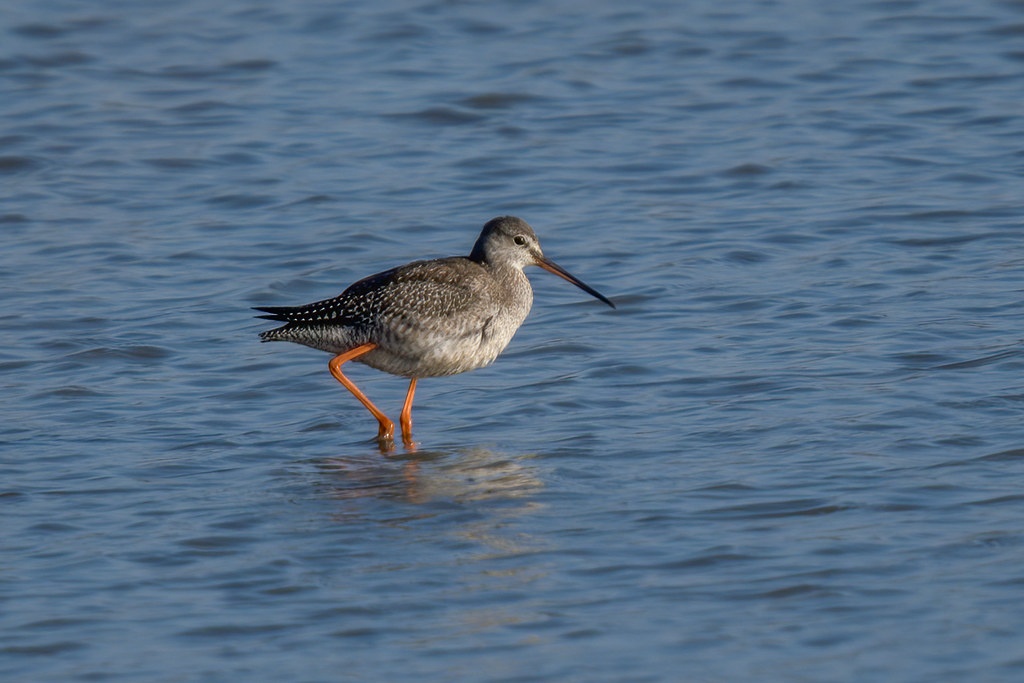
Tim writes: so how does Spotted Redshank (Tringa erythropus) differ from Common Redshank (T. totanus)? Spotted Redshank is slightly bigger and more elegant with longer legs and a longer, thinner bill that has a tiny downward kink at the tip. Spotted Redshank also has a more well-marked face pattern with an obvious eyestripe and pale supercilium (eyebrow). In flight Spotted Redshank lacks the huge white trailing edge to the wings, so has plain wings. Finally the call is very different; Spotted Redshank gives a highly characteristic chu-itt that goes up at the end whereas Redshank usually gives a melancholy teu or teu-hu that goes down at the end. Spotted Redshank has never bred in Britain, but is seen commonly on passage in spring and especially autumn. A few birds spend the entire winter here but most winter in sub-Saharan Africa. This passage bird was in the Dearne Valley in Yorkshire near Adwick.
For such a regularly occurring bird, it seems to have been much overlooked in Britain. I think it was Marmaduke Tunstall who first named it in Britain in 1771 (Ornithologia Britannica) though Peter Pallas described it new to science seven years earlier in 1764. But most British birds had been mentioned a hundred years earlier in John Ray’s Ornithology (1676) so presumably Spotted Redshank was overlooked. Tunstall called it Spotted Redshank but it has subsequently been called Dusky Redshank and Black Redshank, as it is very black in breeding plumage.
[registration_form]
So many of those differences you mention would have been totally invisible to our ancestors, before adequate optics became available. No wonder they didn’t always distinguish. They’d have had to shoot the animal to see it that well, and with shooting things being very common the animals would have been much warier too.